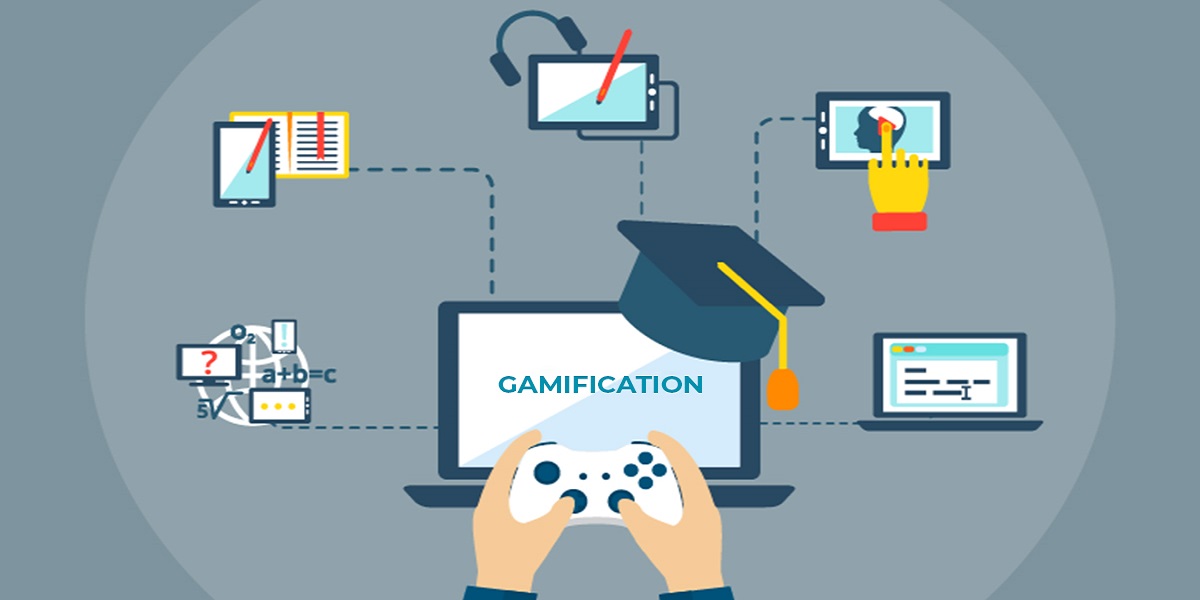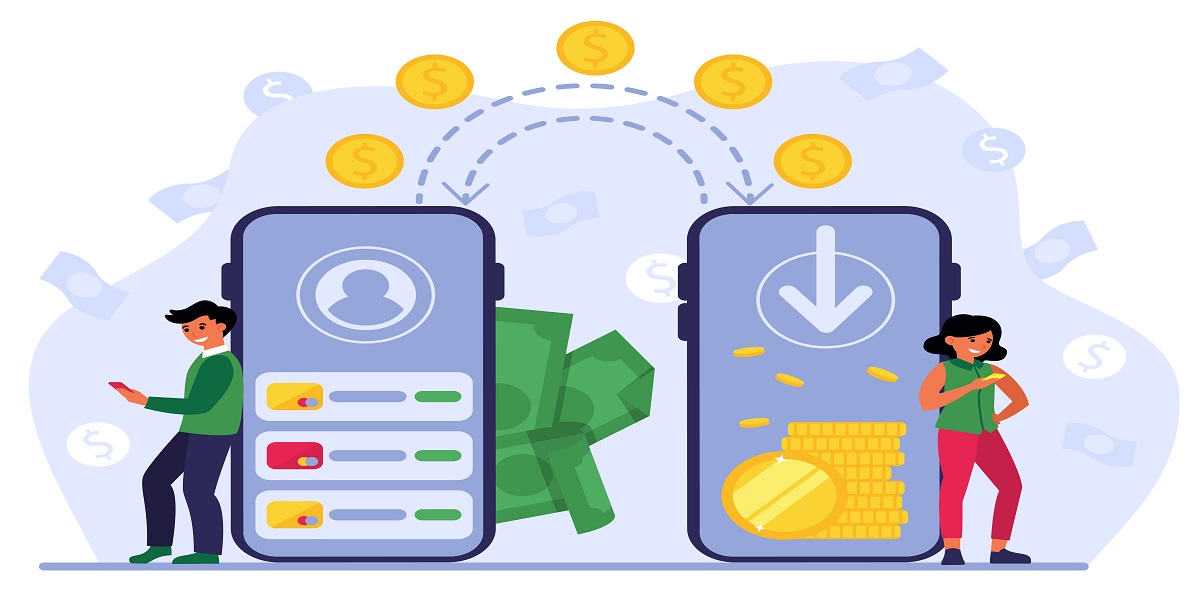Gamification in Education: What is it & How is it Helpful
- By Zachary Davies
- 13-10-2022
- Technology

Gamification in education is emerging as one of the most popular trends of the digital space as the idea of employing game-like processes to enhance learning has proven to be a successful approach.
It’s a method of adding entertainment to learning while enhancing its efficiency. For example, you can find many apps to study different subjects through interesting quizzes and puzzles.
The validation of the demand for the space can be seen through a report from eSchool News which indicates that the revenue from game-based learning will be more than $24 billion by 2024.
What is Gamification?
The implementation of game mechanics in non-gaming environments is known as gamification. It is a set of actions and procedures that use the features of game components to address issues or better user experience.
Gamification in education refers to applying these mechanisms to improve learning results. Let us look more into the concept.
Gamification in Learning
In recent times, learning and the creation of a curriculum are inherently driven by technology. Today's professional educators are progressively using cutting-edge digital technologies and tactics in their teaching methods to generate better learning results.
A way they are doing that is through adding interactive, fun elements in the teaching space. Gamification can make teaching more pleasant and fun while also enhancing teachers' efficiency and on the other hand, the inclusion of gamified components can help students engage and collaborate.
Gamification Strategies for Learning
You can add several gamification strategies to your learning environment. The most well-knowns, which every educational app development company vouches for are:
Point System
A point system motivates individuals to work more to accomplish specific tasks. It also shows students achieved and upcoming milestones during the course or lesson while accurately representing their effort level.
Leaderboards
Leaderboards are excellent for building competition among students. Every student wants to see their name at the top and thus would study more as a consequence.
A fully functional app can even enable you to divide the participants into smaller groups by creating different leaderboards based on various teams for greater competitiveness.
Badges
Badges are a great way to motivate and reward individuals for their efforts. A badge is a virtual object that helps in providing additional detail to your profile. It is a great way to show your appreciation for the time and work the learners put into the course.
Challenges
A challenge is a task that needs an individual to put in the time and effort to achieve. Problem-solving challenges might include learning tactics that require individuals to think outside the box to discover a solution.
Benefits of Gamification in Education
Better Learning Experience
Gamification creates a pleasant learning environment that makes learners feel positive emotions while increasing their engagement level.
It helps to foster a positive attitude toward learning by creating engaging, personalized, and amusing learning materials.
Gamification also provides students a distraction-free learning environment within a familiar setting. People can learn whenever and wherever they choose using education learning applications.
Adds Fun To Learning
Gamification makes studying fun while also providing students with a boost of motivation by introducing a competitive element. The struggle to achieve that new level or objective can be fun.
It adds a playful aspect to learning, resulting in a more enjoyable experience. Gamification has the potential to transform learning into something that students look forward to.
Makes E-learning Interactive
Both online and offline learning often tend to be a one-sided experience. Gamification solves that challenge by making learning interactive.
Through gamified learning apps, teachers are able to add puzzles, quizzes in the course, are able to add features like leaderboards and badges, etc. giving students a chance to interact with other students and teachers in a non-forced manner.
Motivation
The use of progress indicators tend to be tremendously motivating for students. Learning becomes encouraging when you have a measurable objective in mind.
Gamification in education is also beneficial to social learning. Some applications and websites allow you to connect with friends and compete against their scores. Thus, pushing you to learn as much as possible.
Higher Level of Engagement
One of the most significant advantages of gamification in the classroom is its capacity to engage students better than the traditional curriculum can.
Gamified e-learning modules encourage participation by posing challenges and keeping track of students' progress as they study. This way, they are rewarded for their accomplishments as they master learning materials and proceed to increasingly difficult classes.
Gamification typically uses a narrative to guide students through the learning process. These approaches assist students in engaging with course materials and maintaining concentration on the subject.
Real-World Connection
Gamification in education is an excellent technique to relate teachings to real-world problems and applications.
Usually merged with AR/VR, they offer a chance for the students to apply their knowledge in a simulated environment, without the chances of things going wrong.
Students are able to better understand how to use their learned skills when they are able to practice it in a real-world scenario.
Short-Term Rewards
A simple award or a badge can motivate a young student to go on to the next step and eagerly study more.
The prospect of receiving rewards motivates the learner to repeat the learning process or to enter the reward loop. This is why students take on more challenging problems because they get a heightened sense of accomplishment.
Competition and Collaboration
Scores and grades put a lot of pressure on students. Collaborating with a game from their experiences can make all the difference.
More students collaborate and discuss topics as they strive to achieve well and progress to new subjects. This results into a win-win situation for every type of students. Those who perform well will be justifiably proud of their achievements. And those who find the games more difficult will seek advice and assistance from their peers.Helps in Cognitive Development
Game-based learning aids in cognitive growth which results in an increase in brain activity. Such games are sometimes referred to as "brain games."
Brain games are becoming increasingly popular since they can help the brain process and retain knowledge more quickly.
Enables Mistake-Driven Learning
Mistakes are excellent instructors. They demonstrate where we need to improve and where we thrive. An incentive-based method is used in both gamification and serious gaming.
It helps online learners receive rapid feedback on areas for growth. They can also see the conclusion and consequences of their actions before they enter the actual world. Every error made by online learners is an opportunity to develop and reflect.
Final Thoughts
Gamification is a powerful strategy and a practical approach for motivating students. You can expect to see more gamification tactics as the world of education gets increasingly digital.
Thinkrolls, Coco, and MentalUP Educational Games are some popular examples of educational games. You can also build an educational app or game with similar characteristics and become a part of this growing industry.





